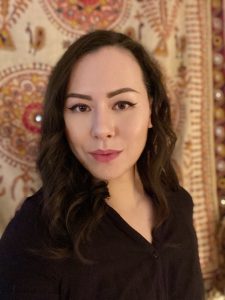Gwendolyn Collaço

Gwendolyn Collaço is Collections Curator of the Aga Khan Documentation Center at MIT, which preserves notable holdings of architectural drawings, photographs, watercolors, and archives relating to built environments of the Islamic world. There, she also formed a growing collection of rare books, manuscripts, and contemporary art objects that explore topics of Islamic architectural heritage, science, and technology. Previously, she was the Assistant Curator for Art of the Middle East at LACMA, where she contributed to exhibitions and the reinstallation of the permanent collection galleries following building renovations. Gwendolyn has also worked extensively in academic libraries. She expanded special collections of Islamic manuscripts, prints, and photographs, while diversifying general collections as the Middle Eastern Studies Librarian of the University of Pennsylvania. Earlier, she spearheaded the digitization of special collections as the Visual Resources Librarian for Islamic Art & Arch. at Harvard Fine Arts Library. Gwendolyn received her PhD from the joint program for History of Art & Architecture and Middle Eastern Studies at Harvard University. Prior to that, she completed her MA in Middle Eastern Studies at the University of Chicago and her BA at Vassar College.
Her research spans artistic exchanges between early-modern Islamic empires, Ottoman manuscripts, print production in the Islamic world, histories of collecting, art markets, and women’s material worlds. Gwendolyn’s current book project offers the first extended history of the commercial art market for single-folio paintings in Ottoman Istanbul during the 17th-18th c. Works from this market largely survive in albums, costume albums, and mecmuas (anthologies). Her research contextualizes these paintings from artistic production to their purchase by a diverse clientele, and follows their afterlife as recommodified objects in private collections. Her past projects have included cross-cultural exchanges in Levantine prints and depictions of dress in artists’ albums of the Qajar dynasty in Iran.